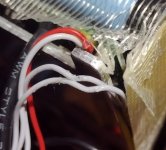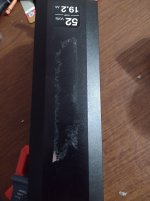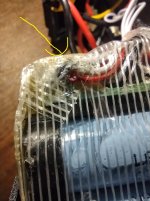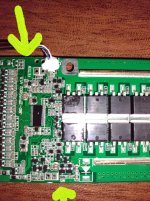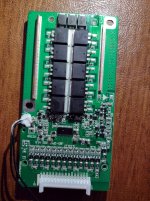I bought a non-working Juiced 52v 19ah ebike battery.
When I got it:
Discharge port measured - 0.1v?
Charge Port measured - 5v
I charged the battery via the charge port at 0.5 a first and at around 40v I charged it at 1 a.
Problem 1 - The battery won't charge beyond 54v. So I stopped,
Problem 2 - LED push on/off switch dead
Problem 3 - Discharge port measures 0.9v (FYI the charge port measured 52.6v)
I confirmed that the push button is working by taking Ohm when off and on.
Opened the battery and it was VERY hard to push it out, I felt like I was giving birth via the battery. I pushed it out enough to expose the BMS,
Holi mother of tight battery enclosures, I found that the RED and WHITE wire going to the on/off switch had rubbed on the high spot in the enclosure and probably touched the Alu enclosure.
BMS - #1 - toast or $2 - in sleep mode
How to attempt to wake up the BMS?
I will post some pics over lunch.
When I got it:
Discharge port measured - 0.1v?
Charge Port measured - 5v
I charged the battery via the charge port at 0.5 a first and at around 40v I charged it at 1 a.
Problem 1 - The battery won't charge beyond 54v. So I stopped,
Problem 2 - LED push on/off switch dead
Problem 3 - Discharge port measures 0.9v (FYI the charge port measured 52.6v)
I confirmed that the push button is working by taking Ohm when off and on.
Opened the battery and it was VERY hard to push it out, I felt like I was giving birth via the battery. I pushed it out enough to expose the BMS,
Holi mother of tight battery enclosures, I found that the RED and WHITE wire going to the on/off switch had rubbed on the high spot in the enclosure and probably touched the Alu enclosure.
BMS - #1 - toast or $2 - in sleep mode
How to attempt to wake up the BMS?
I will post some pics over lunch.



